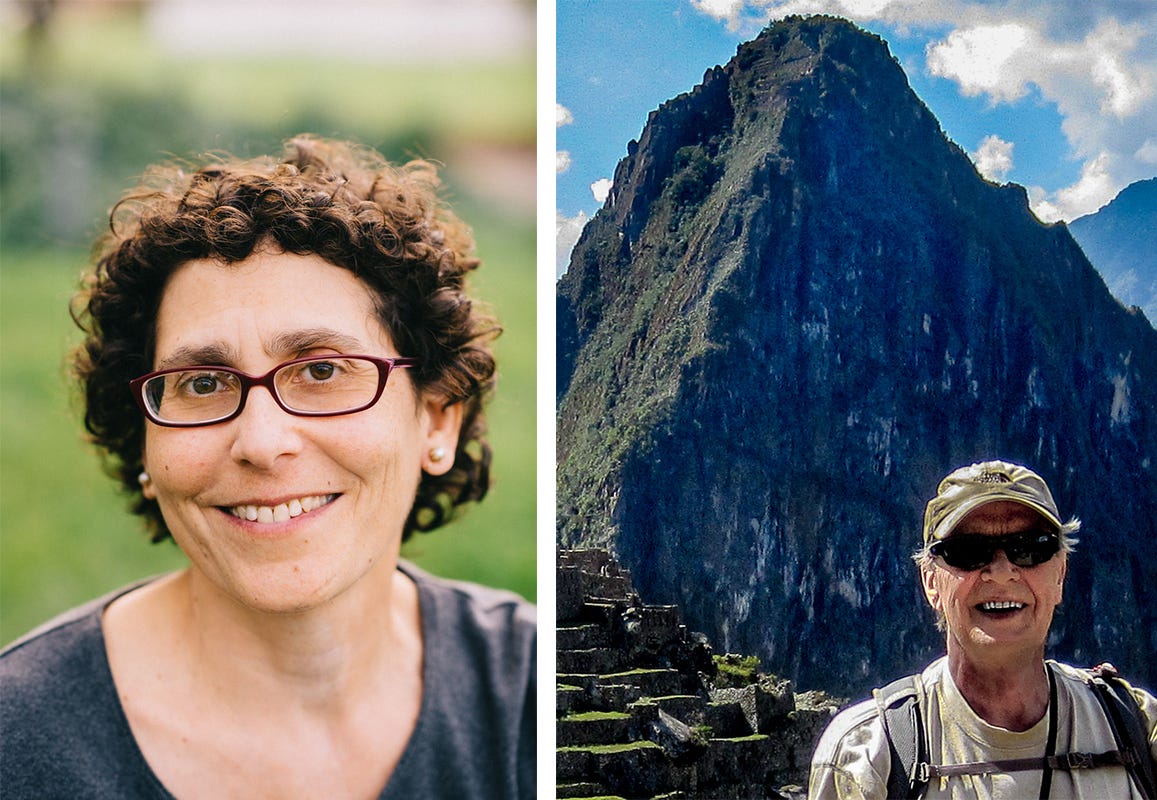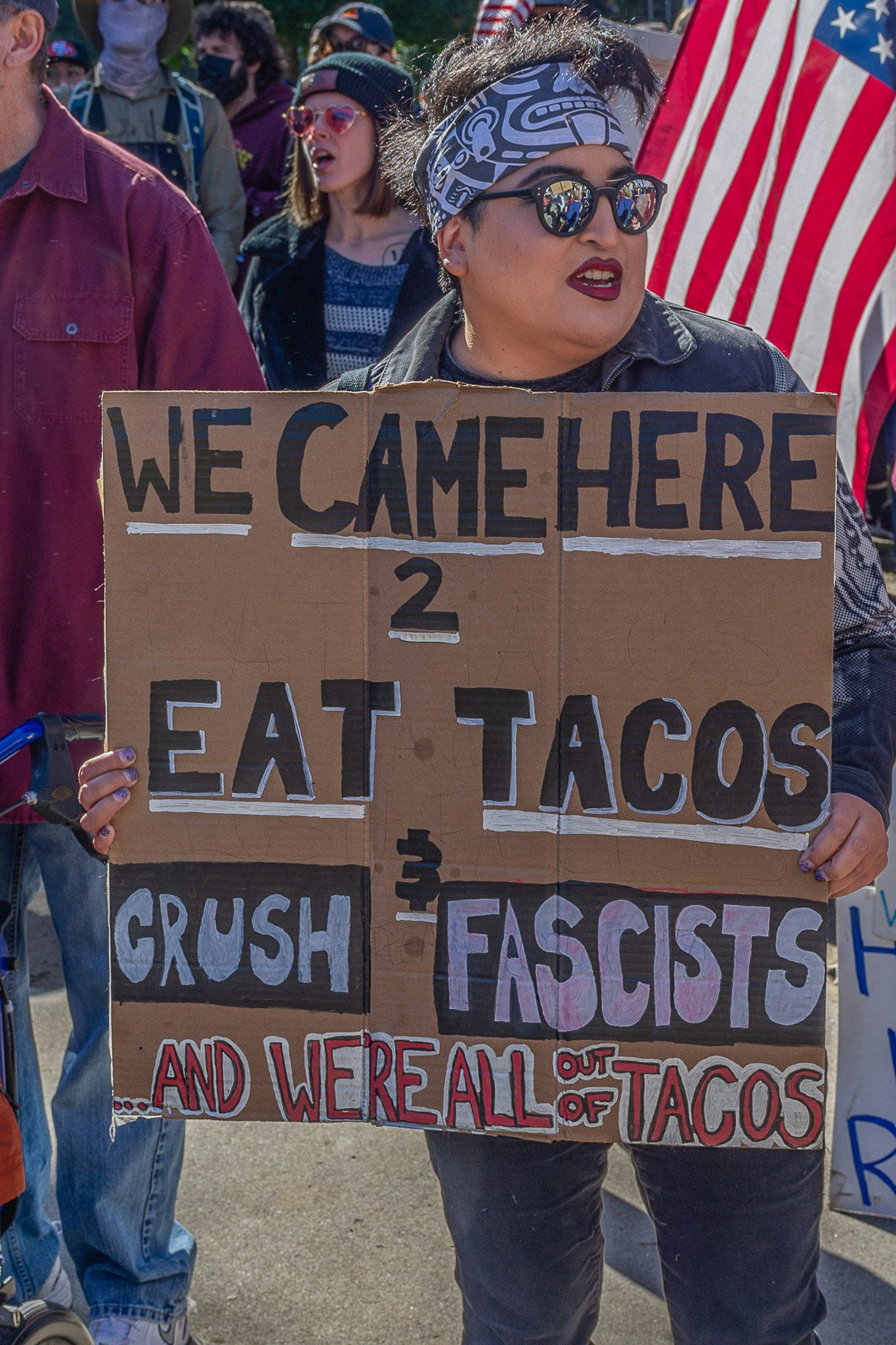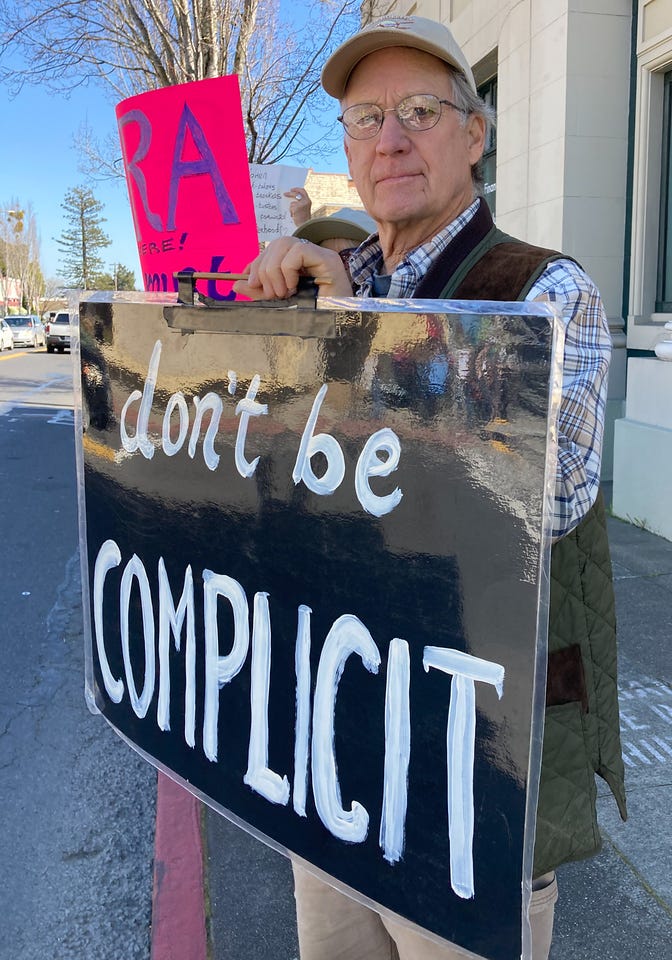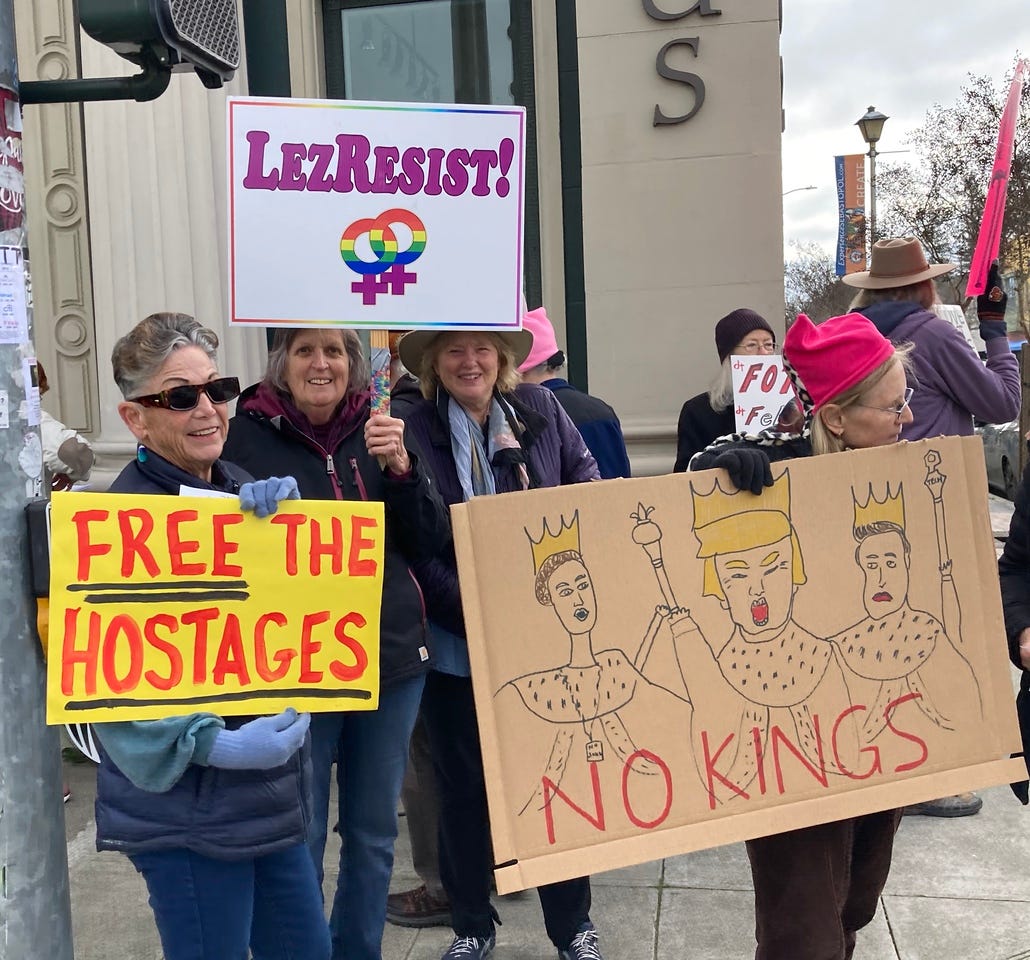Pro Bono Photo does free photography for protests and other good causes
Magnifying the message with photography, photojournalism and videography
If you’ve noticed that some of the local protest photos in the Sebastopol Times look more professional than those I hurriedly snap with my iPhone, you can thank Pro Bono Photo, a “hobby” project of retired Bay Area scientist Jack Owicki.
A former associate professor of biophysics at UC Berkeley and a veteran of the Bay Area biotech scene, Owicki founded Pro Bono Photo as a clearinghouse that matches worthy organizations that need photographic/videographic services with volunteer photographers and videographers who wish to donate their time and expertise.
Pro Bono Photo was founded during the first Trump administration, and it has a forthrightly progressive slant.
“Owicki was asked to coordinate volunteer photographers for the 2017 Women's March in San Francisco. Then someone suggested to him, ‘Gosh, it sure would be a nice idea if there was an organization that did this,’” said Steve Disenhof, one of two volunteer administrators for the Pro Bono Photo website.
The group has a stable of 60 affiliate photographers, who take photos at events all over the Bay Area, including Sebastopol.
“Since 2017, we’ve covered about 1,200 events in 37 Bay Area cities. We’ve recently expanded to Sacramento,” Disenhof said. “We’ve had, I think, it’s 17 million views since we started, and we’ve got about 70,000 to 80,000 photos online.”
“As a photographer, I believe that what I do with my camera can magnify the messages of the organizations that are out there, and not just political events,” Disenhof said. “Especially during the Biden years, where we weren’t covering political events, we were covering fundraisers for nonprofits, tree plantings, immigration and Legal Aid events.”
Now that Trump is back in office, he said there are a lot more political protests to cover.
The Pro Bono photographer you’re most likely to see in Sebastopol is Leah Halper, a Santa Rosa-based photojournalist.
“I’m an activist and I’m also a historian and I have a background in journalism and photojournalism. I’ve taught all of those things—history, journalism, photojournalism. I understand the importance of documenting a movement, especially when we have a government that is not particularly interested in free speech,” she said.
Halper said that a lot of photographers with Pro Bono Photo are what she calls “art photographers” and she’s learned a lot from them, but ultimately, she thinks of herself as a photojournalist.
“I'm a photojournalist, so I look for moments,” she said. “I look for people interacting.”
How does she go about photographing a protest?
“The temptation is to start right away, but it’s kind of important to get a sense of what the limits of the protest are—boundaries and where people are coming from. I’m looking around as I approach to see if there are any higher areas that I can take photos from for a different perspective or are there any interesting possibilities for going into a building and photographing outward.”

Photographer Bill Clark, a retired potter now a skilled amateur photographer who also lives in Santa Rosa, says that at a protest or any event, “I’m looking for the most compelling shot I can find, something that shows our common humanity.”
He said that when he approaches a photo site, “I am pretty locked in and watching. I’m looking for that shot. I’m looking for that one that tells the story. I mean, that’s kind of what our Pro Bono motto is, ‘We tell your story.’”
“I just keep my eyes open and keep moving,” Clark said.
Although Pro Bono Photo is an all-volunteer effort, there’s quite an extensive orientation process for photographers—professionals and skilled amateurs—who want to volunteer. Pro Bono Photo expects their volunteer photographers to abide by a professional code of ethics.
“We have shared the Professional Press Photographers organization’s code of ethics to our photographers, and we as an organization insist that our photographers abide by the code of ethics, which means that when you see a photograph we’ve taken, there’s nothing been cloned in or out of it. We don’t pose people…We try and uphold journalism basics as photographers.”
Every now and then, Disenhof said, he has to tell people not to smile, which is often an automatic reflex when they see that someone is taking their picture.
“The example I use is these three women in the Civic Center holding pictures of kids in cages. And the first thing people do when you point a camera at them is they smile. And I had to say, ‘Please don’t smile. I can’t use that. I’m not going to use that if you smile. Look at your signs.”
Pro Bono Photo’s volunteer photographers get their assignments in several ways. The group has a Google Groups list for upcoming events, and photographers can sign up there. Sometimes organizations contact Pro Bono Photo and ask for one of their photographers to attend an event. Sometimes the photographers themselves hear about an event and, if it matches the organization’s mission and the group can’t afford to pay for a photographer, Pro Bono Photo’s administrators will set up a gallery page for them on the website.
Disenhof said that while the many of the protests they cover are explicitly political, they don’t do photography for politicians per se.
“We have a policy of not sending photographers to events by political candidates. If the Democrats or Republicans say, ‘Hey, we've got this event,’ we’re not going to do it. If someone's running for office, we’re not going to do it,” he said.
Disenhof said they made an exception to that rule during the last presidential election.
“We recognized how important this election was going to be,” he said. “We discussed it and said, ‘You know, of all things, this is one time where we need to break the rules.’”
They also don’t do photography for larger, well-funded organizations.
“For instance, if the United Way calls us and says, ‘Hey, look, we’ve got this event coming up.’ We’re gonna say, ‘No, you know, you guys can afford to hire a photographer.’
Find out more at the Pro Bono Photo website.






What a terrific way amplify our voices. Strength is in citizen initiative. Thank you for this story.
Great service and a great way to capture history. Understand they don't want to be political in nature but noticed most of their coverage seems to be of "progressive" causes. Fair and balanced. :)